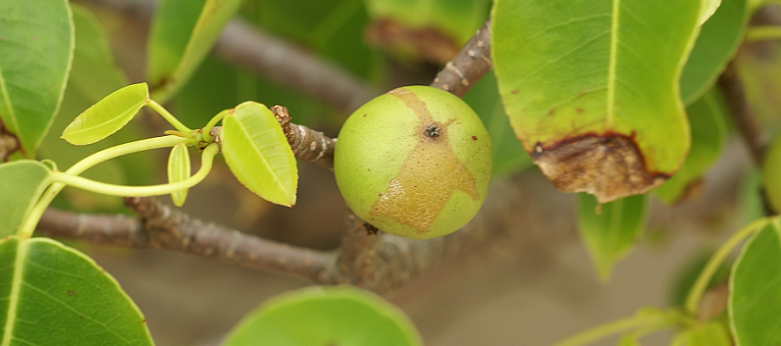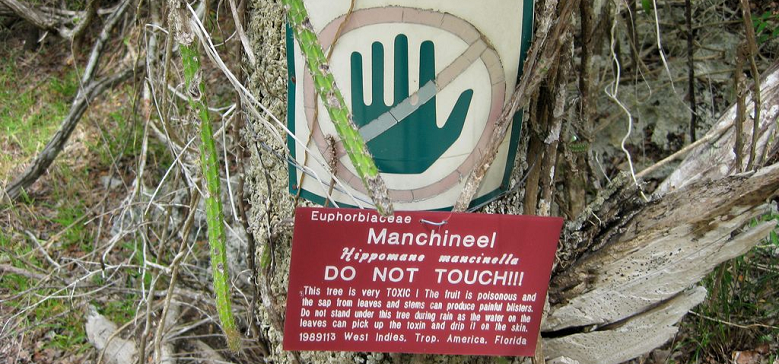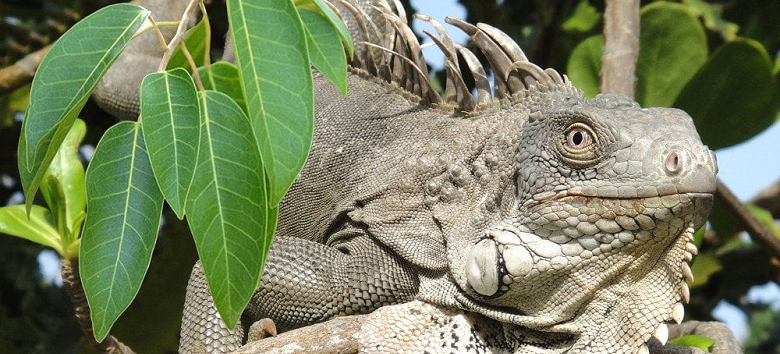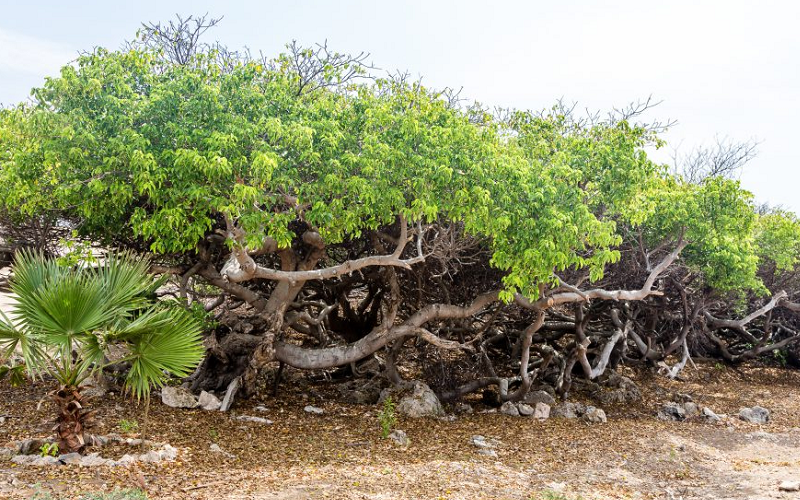The Manchineel tree is a tree native to the Caribbean and Florida that is highly toxic. All parts of the tree contain strong toxins and can cause severe skin irritation and blistering, as well as other harmful effects if ingested. It is considered one of the most dangerous trees in the world and is often marked with warning signs to prevent accidental contact.
What Is the Manchineel Tree?
The Manchineel tree (Hippomane mancinella) is a species of flowering plant that is commonly found in coastal areas of the Caribbean, Central America, and Florida. It can grow up to 66 feet tall and is easily recognizable by its small greenish-yellow apples and its characteristic “eyebrow” of drooping branches.
The tree contains a variety of toxic compounds, including phorbol esters and a potent irritant called mancinellin, which can cause severe skin irritation and blistering, as well as respiratory and digestive problems if ingested. Even rainwater that has fallen on the tree can be toxic and cause skin irritation.
Despite its dangerous reputation, the Manchineel tree has been used for various purposes by indigenous people, including as a source of food and medicine. However, caution is advised as even small amounts of the tree’s toxins can be dangerous.
Due to the potential danger it poses, the Manchineel tree is often marked with warning signs and is avoided by beachgoers and hikers. If you come into contact with the tree, it is important to wash the affected area thoroughly with soap and water.

Why the Manchineel Is Such a Dangerous Tree
The Manchineel tree is considered one of the most dangerous trees in the world because all parts of the tree, including its leaves, bark, and fruit, contain strong toxins. These toxins can cause severe skin irritation and blistering, as well as other harmful effects if ingested, such as respiratory distress, digestive problems, and in extreme cases, death.
The primary toxic compounds in the Manchineel tree are phorbol esters and a potent irritant called mancinellin. When these toxins come into contact with the skin or mucous membranes, they can cause intense burning, itching, and blistering. Ingesting even small amounts of the tree’s fruit or sap can lead to digestive problems, such as nausea, vomiting, and diarrhea.
Additionally, the tree’s sap can cause temporary blindness if it comes into contact with the eyes, and rainwater that has fallen on the tree can also be toxic and cause skin irritation. Due to the potential danger it poses, it is important to avoid contact with the Manchineel tree and to be aware of its warning signs when visiting areas where it grows.
Which Parts of the Manchineel Are the Most Toxic?
All parts of the Manchineel tree are toxic to varying degrees. The bark, leaves, and fruit contain the strongest concentrations of toxic compounds, including phorbol esters and a potent irritant called mancinellin. Contact with these parts of the tree can cause severe skin irritation and blistering, as well as other harmful effects if ingested.
Even the sap of the Manchineel tree can be highly toxic and cause skin irritation and blistering. Ingesting even small amounts of the tree’s fruit or sap can lead to digestive problems, such as nausea, vomiting, and diarrhea. Additionally, the tree’s sap can cause temporary blindness if it comes into contact with the eyes, and rainwater that has fallen on the tree can also be toxic.

Pains and Effects of the Manchineel
The Manchineel tree (Hippomane mancinella) contains toxic compounds that can cause a range of harmful effects if they come into contact with the skin or are ingested. Some of the most common effects of exposure to the Manchineel tree include:
- Skin irritation and blistering: Contact with the leaves, bark, or fruit of the Manchineel tree can cause intense itching, burning, and blistering of the skin.
- Respiratory distress: Inhaling the sap or smoke from burning wood from the Manchineel tree can cause respiratory distress and can cause difficulty breathing.
- Digestive problems: Ingesting even small amounts of the tree’s fruit or sap can lead to digestive problems, such as nausea, vomiting, and diarrhea.
- Temporary blindness: The sap of the Manchineel tree can cause temporary blindness if it comes into contact with the eyes.
- Systemic toxicity: In extreme cases, ingesting a large amount of the tree’s toxins can lead to systemic toxicity and even death.
Practical Uses of Manchineel
Despite its dangerous reputation, the Manchineel tree (Hippomane mancinella) has been used for various purposes by indigenous people in the Caribbean, Central America, and Florida. Some of the practical uses of the Manchineel tree include:
- Medicine: Indigenous people have used various parts of the Manchineel tree, including the bark and fruit, for medicinal purposes. However, due to the tree’s toxic nature, these remedies should be used with caution and under the guidance of a medical professional.
- Fish poison: The sap of the Manchineel tree has been used as a fish poison by indigenous people. The sap can be used to stun or kill fish, making them easier to collect.
- Wood: The wood of the Manchineel tree is strong and durable, and it has been used for construction and for making furniture, boatbuilding, and other purposes.

Protecting the Manchineel Tree
In order to protect the Manchineel tree and its habitats, various measures are being taken by conservation organizations and government agencies. This includes preservation and replanting efforts in areas where the tree is considered rare or endangered, as well as education campaigns aimed at raising awareness about the dangers of the tree and promoting caution when visiting areas where it grows.
In some countries, there are regulations in place to prevent the over-harvesting or destruction of the Manchineel tree. Despite these efforts, it is still important to be cautious and aware of the dangers posed by this tree, and to avoid contact with its toxic parts. If you come into contact with the Manchineel tree, it is important to wash the affected area thoroughly with soap and water and seek medical attention if necessary.

